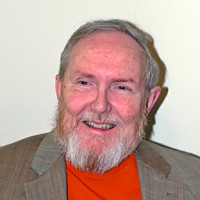Privacy and anonymity have been associated with the internet at least since Peter Steiner’s famous cartoon on page 61 of the July 5, 1993, issue of The New Yorker which originated the meme “On the internet, nobody knows you’re a dog.” Yet today most people are no clearer about the difference between the two (or among those and their cousin, pseudonymity) than they were twenty years ago.
I bring this up because the general press and the blogosphere have once again been lit up in a discussion of identity, anonymity and privacy. “A Gay Girl in Damascus” was a much talked about blog. As described by Judith Timson, in Canada’s Globe and Mail, it was: “…the riveting blog of ‘Amina Arraf,’ a young and bravely out Syrian-American lesbian in Damascus who attracted international media attention by chronicling both the revolution there and her own personal life in such posts as: ‘Why I am doing this. I live in Damascus, Syria. It's a repressive police state. Most LGBT people are still deep in the closet or staying as invisible as possible. But I have set up a blog announcing my sexuality, with my name and my photo. Am I crazy? Maybe.’ ”
Timson, though, thinks that Tom MacMaster, a 40-year-old American graduate student at the University of Edinburgh who wrote the blog (as a way to improve his writing skills) “…is but a laughable subset in an increasingly creepy world of online poseurs, a confusing community full of avatars, alts (alternative identities) and something called ‘sockpuppets,’ which, as far as I can make out (with a little help from Wiki), are online identities ‘used for purposes of deception within an online community’.”
And what was MacMaster’s crime? According to Timson: “Tom MacMaster was chastised for diverting attention from authentic human-interest stories in the tumult of Syria, not to mention appropriating ‘the lesbian voice’.”
One wonders if Ms Timson would say something similar about Mary Ann Evans (A.K.A. George Elliott).
Mr. MacMaster used what we call a persona, Ms Timson might call it a “fake” persona - a term New York Times reporter Sarah Perez used in the article “The End of Online Anonymity,” a few years ago in reference to a court ruling in Missouri which she claimed would criminalize the use of fabricated personas. Ms Timson (and many of her readers) might applaud that ruling.
However, so-called “fake” personas have been a staple of writers and storytellers from at least the days of Homer. Any novel with at least one character has “fake” personas. But, you may say, the author isn’t pretending to be that character, are they? Well, consider the “autobiography” of Howard Hughes. This was called a hoax, it’s true, because Howard Hughes could be proven to really exist. But what about the autobiography of a fictional character – such as David Copperfield (the Dickens character, not the illusionist)? There’s certainly no ‘crime’ there (unless you’re a high school sophomore forced to read it!).
People create many personas for themselves, especially on-line, for many different reasons. Mr. MacMaster created a persona, a pseudonymous identity for the purpose of creating a riveting documentary-style fiction. That act harmed no one. But when The Guardian newspaper tied him to the “A Gay Girl in Damascus” blog they certainly did violate his privacy – they revealed information about him which he (presumably) didn’t want revealed. That’s the “crime” we should be talking about.
















































